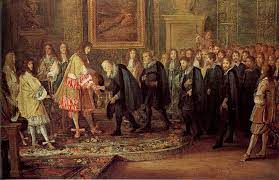“19th-Century Perspectives and Political Developments” – Everything You Need to Know
The 19th century was a transformative period when sweeping political changes and diverse perspectives redefined nations and societies. From revolutionary ideas that questioned long-held traditions to the evolution of modern democratic institutions, this era witnessed a dynamic interplay between philosophy, politics, and societal progress. In this comprehensive guide on 19th-Century Perspectives and Political Developments, we’ll explore the key ideologies, events, and reforms that shaped the political landscape of the time. Whether you’re a student of history, a political enthusiast, or simply curious about how past ideas continue to influence our modern world, this article offers an in-depth look at the forces that drove change during one of history’s most pivotal centuries.
Introduction: Unraveling the Political Fabric of the 19th Century
Imagine a time when monarchies were challenged by the radical ideas of liberty, equality, and fraternity; when the voices of the common people began to demand representation in government; and when new ideologies emerged that still resonate today. Did you know that many of the democratic principles and political institutions we value now have their roots in the debates and developments of the 19th century?
In this post on 19th-Century Perspectives and Political Developments, we will:
- Define what this topic encompasses and highlight its essential characteristics.
- Delve into the historical context that set the stage for major political changes.
- Explore key ideological movements, reforms, and political events that reconfigured society.
- Present real-world examples and case studies that illustrate how these perspectives and developments unfolded.
- Examine the lasting significance of 19th-century political thought in shaping modern governance and society.
- Address common misconceptions and provide clear, concise FAQs.
- Discuss modern relevance and current trends, showing how the legacy of the 19th century continues to influence contemporary debates.
Understanding 19th-Century Perspectives and Political Developments is not only crucial for grasping how our political institutions evolved—it also offers timeless insights into the processes of change, revolution, and reform that continue to drive society today.
What Are “19th-Century Perspectives and Political Developments”?
Defining the Concept
19th-Century Perspectives and Political Developments refer to the broad range of ideas, ideologies, reforms, and political changes that emerged and evolved during the 1800s. This period saw a dramatic shift from traditional, often autocratic regimes toward more modern systems based on democracy, constitutionalism, and individual rights. Key components include:
Diverse Ideological Movements:
From liberalism and nationalism to socialism, conservatism, and even early forms of feminism, the 19th century was marked by a vigorous exchange of ideas that challenged established power structures and reimagined governance.Political Reforms and Institutional Change:
The century witnessed significant reforms—such as the expansion of suffrage, the rise of representative government, and the reorganization of state institutions—that laid the foundation for modern democracies.Social and Economic Transformation:
Industrialization, urbanization, and globalization radically altered social hierarchies and economic relationships, creating new political demands and reshaping public policy.Intellectual Debates and Public Discourse:
Political thinkers and public intellectuals of the 19th century, including figures like John Stuart Mill, Karl Marx, and Alexis de Tocqueville, influenced both policy and popular opinion with their analyses of freedom, equality, and governance.
In essence, 19th-Century Perspectives and Political Developments encapsulate the multifaceted process by which old orders were questioned and new political paradigms emerged—a process that continues to echo in today’s political debates and institutions.
Historical and Contextual Background
The World Before and During the 19th Century
Before the onset of the 19th century, much of the world was organized under monarchical and feudal systems with limited participation from the general populace in governance. The Enlightenment of the 17th and 18th centuries, however, laid the intellectual groundwork for a radical rethinking of power and society. Enlightenment thinkers championed reason, individual rights, and the idea that government should serve the people.
Milestones Setting the Stage
The Enlightenment and Revolutionary Ideals:
Philosophers such as John Locke, Montesquieu, and Rousseau questioned the divine right of kings and argued for natural rights and social contracts. These ideas directly influenced the American Revolution (1775–1783) and the French Revolution (1789–1799), events that radically altered political discourse.Post-Revolutionary Realignments:
In the wake of revolutionary upheavals, European states and emerging nations struggled with the challenges of reconciling old traditions with new ideals. The 19th century became a battleground for competing visions of society—between those advocating for rapid, radical change and those favoring gradual evolution.Industrial and Social Transformation:
The Industrial Revolution, beginning in the late 18th century and gaining momentum in the 19th century, transformed economic structures, catalyzing urbanization, new labor systems, and heightened social stratification. These economic shifts fueled political demands for reform.
Notable Historical Anecdotes
The French Revolution’s Legacy:
The French Revolution not only overthrew the monarchy but also set a precedent for secular, democratic governance and legal equality. Its principles—liberty, equality, and fraternity—became rallying cries for political change across Europe.The Reform Acts in Britain:
Beginning in 1832, a series of Reform Acts gradually expanded the British electorate and reformed parliamentary representation. These acts were crucial in transitioning Britain from an aristocratic system to a more inclusive parliamentary democracy.The Rise of Nationalism:
In regions like Italy and Germany, nationalist movements emerged with the goal of unifying fragmented states. The unification of these countries in the latter half of the 19th century dramatically reshaped the political map of Europe and underscored the power of popular political identity.
In-Depth Exploration / Main Body
To understand 19th-Century Perspectives and Political Developments, we must examine the interplay of ideas, events, and reforms that defined the century. Below, we break down the key components into detailed sections.
1. Ideological Foundations
a. Liberalism: The Call for Freedom and Equality
Core Beliefs:
Liberalism in the 19th century was grounded in the belief that individuals have inherent rights and that governments should protect these rights through constitutional limits on power.Key Thinkers:
Figures such as John Stuart Mill and Alexis de Tocqueville explored themes of individual liberty, free expression, and the dangers of tyranny—even in democratic systems.Impact on Politics:
Liberal ideologies influenced constitutional reforms, the expansion of suffrage, and the development of representative institutions. They challenged the old order by advocating for legal equality and civil rights.Case Study:
The evolution of British political reform, particularly through the Reform Acts, demonstrates liberalism’s practical impact. These acts gradually dismantled the rigid class structures and extended voting rights, setting a model for other democracies.
b. Nationalism: The Rise of the Nation-State
Defining Nationalism:
Nationalism is the belief in the self-determination of peoples and the creation of a nation-state based on shared culture, language, and history. In the 19th century, it became a powerful political force.Historical Examples:
The unification of Italy and Germany are prime examples. Leaders like Giuseppe Garibaldi in Italy and Otto von Bismarck in Germany harnessed nationalist sentiments to unify disparate regions into modern nation-states.Political Developments:
Nationalism not only reshaped the political map of Europe but also influenced international relations, setting the stage for both cooperation and conflict in subsequent decades.
c. Socialism and Radical Ideologies: Addressing Economic Inequality
Emergence of Socialist Thought:
The hardships of the working class in industrial societies led to the development of socialist ideologies. Karl Marx and Friedrich Engels critiqued capitalism and envisioned a classless society based on common ownership.Influence on Political Movements:
Socialist ideas spurred labor movements and influenced policies aimed at reducing economic inequality. Although full socialist revolutions were rare in Western Europe during the 19th century, the ideological impact was profound.Long-Term Legacy:
Many modern welfare states and labor rights protections have roots in the socialist critiques and reforms of this period.
d. Conservatism: Preserving Order Amidst Change
Conservative Response:
In reaction to the rapid changes and perceived excesses of liberal and radical movements, conservatism emphasized tradition, stability, and gradual evolution.Key Proponents:
Thinkers like Edmund Burke argued that society should evolve organically, preserving the wisdom of established institutions and customs.Political Impact:
Conservative forces played a crucial role in counterbalancing radical reforms, ensuring that changes were implemented in a way that maintained social order and stability.
2. Political Reforms and Institutional Developments
a. The Expansion of Suffrage and Democratic Representation
Historical Context:
In many countries, political power was historically confined to a small elite. The 19th century saw a push toward democratization and wider political participation.Key Reforms:
- British Reform Acts:
A series of acts in the UK extended the right to vote from a narrow class of property owners to a broader segment of the population. - American Political Developments:
While the U.S. began as a republic with an emphasis on democratic ideals, various reforms during the 19th century further refined the electoral process and expanded political rights.
- British Reform Acts:
Case Study:
The gradual enfranchisement of the working class in Britain, culminating in reforms that laid the groundwork for modern parliamentary democracy, demonstrates the transformative power of extending political representation.
b. Legislative and Judicial Reforms
Rule of Law:
The establishment of a legal framework that protected individual rights and limited government power was a cornerstone of 19th-century political developments.Key Developments:
- Constitutional Reforms:
The drafting of new constitutions in several emerging nation-states established the principles of separation of powers and checks and balances. - Judicial Independence:
Reforms aimed at ensuring the impartiality and independence of the judiciary helped solidify the rule of law and prevent abuses of power.
- Constitutional Reforms:
Real-World Example:
The adoption of the U.S. Constitution and later amendments, as well as constitutional changes in European nations, created a legal legacy that continues to underpin modern democracies.
c. The Role of Political Institutions
Institutions as Change Agents:
Beyond specific reforms, the very structure of political institutions evolved during the 19th century. Parliaments, local governments, and bureaucracies were restructured to be more representative and efficient.Institutional Innovation:
Mechanisms such as regular elections, public debates, and the establishment of political parties became central to democratic governance.Impact:
These institutional developments not only managed political change during the 19th century but also provided the structural foundations for modern governance.
3. Economic Transformations and Their Political Implications
a. The Industrial Revolution and Capitalist Expansion
Economic Overhaul:
The rapid growth of industrial production transformed economies from primarily agrarian to industrial and capitalist. This economic shift had profound political repercussions.New Economic Classes:
The rise of industrialists and the working class reshaped societal hierarchies, leading to demands for political representation and social justice.Global Trade and Finance:
Economic expansion led to increased global trade, financial innovation, and the rise of market economies. These developments influenced domestic and international political policies.Case Study:
The transformation of Britain into the “workshop of the world” illustrates how economic change spurred political reforms—from labor laws to regulatory frameworks—that continue to resonate today.
b. The Intersection of Economy and Ideology
Capitalism vs. Socialism:
The economic realities of industrial capitalism prompted ideological debates about wealth distribution and the role of government in regulating the economy.Policy Responses:
Governments introduced reforms to protect workers, regulate markets, and promote fair competition. These policies laid the groundwork for modern economic governance.Long-Term Benefits:
The dialogue between capitalist expansion and socialist critique continues to shape economic policy debates, influencing everything from tax policy to labor regulations.
4. Social and Cultural Developments: Changing Minds and Hearts
a. Urbanization and Demographic Shifts
Mass Migration:
Industrialization led to rapid urbanization as people migrated from rural areas to cities in search of work. This shift had a profound impact on social structures and political dynamics.Social Challenges and Reforms:
Overcrowding, public health crises, and inadequate infrastructure in urban areas spurred reforms in housing, sanitation, and education. These challenges also influenced political ideologies and reform movements.Real-World Example:
The growth of cities like Manchester and New York in the 19th century serves as a vivid illustration of how urbanization transformed society and prompted both political and social reform.
b. Cultural Shifts and Public Discourse
Role of the Press and Public Opinion:
The expansion of the press and literacy rates enabled the dissemination of political ideas and fostered vibrant public debate. Newspapers, pamphlets, and public lectures played a crucial role in shaping 19th-century perspectives.Impact on Political Development:
As public opinion became a powerful force, political leaders were compelled to respond to the demands of a more informed and vocal citizenry. This shift paved the way for more responsive and participatory governance.Cultural Legacy:
Artistic and literary movements of the time—such as Romanticism and Realism—reflected the tensions and aspirations of the era, reinforcing the political debates that underpinned reform efforts.
Importance, Applications, and Benefits
Understanding 19th-Century Perspectives and Political Developments offers far-reaching benefits and practical applications:
a. Informing Modern Governance and Policy
- Policy Design:
Insights from 19th-century political reforms can guide modern policymakers in designing effective, inclusive, and sustainable public policies. - Institutional Resilience:
Learning how past institutions adapted to rapid change helps governments build resilience in the face of contemporary challenges such as globalization and technological disruption.
b. Enhancing Civic Engagement and Public Discourse
- Historical Literacy:
A well-informed public that understands the evolution of political ideas is better equipped to participate in democratic processes and hold leaders accountable. - Inspiration for Reform:
The successes and failures of 19th-century reforms inspire current social and political movements, offering valuable lessons on the importance of balanced and thoughtful change.
c. Bridging Economic and Social Policy
- Inclusive Growth:
The interplay between economic transformation and political reform during the 19th century demonstrates how policies can be crafted to ensure that economic progress benefits all segments of society. - Social Justice:
Many of today’s social justice initiatives—ranging from labor rights to public health and education—have roots in the reform movements of the 19th century, underscoring the timeless nature of these ideas.
d. Global Relevance and Future Insights
- Transnational Lessons:
Although rooted in European and American contexts, 19th-century political developments have influenced governance models worldwide. Understanding these influences can help guide reforms in emerging democracies. - Anticipating Change:
By studying historical causation and political evolution, contemporary leaders and citizens can better anticipate future shifts and adapt proactively.
Addressing Common Misconceptions and FAQs
Despite its significance, several misconceptions about 19th-Century Perspectives and Political Developments persist. Let’s clarify some common points:
FAQ 1: Were 19th-century political developments solely about democratization?
- Misconception:
Many believe that the primary focus was only on expanding democratic rights. - Reality:
While democratization was a key aspect, the century also saw debates over nationalism, economic ideologies, social reforms, and the balance between radical change and stability.
FAQ 2: Did all reforms during this era have immediate success?
- Misconception:
Some assume that every reform was a complete success. - Reality:
Many reforms were incremental, met with resistance, or had mixed results. However, even partial successes contributed to long-term change and provided important lessons for future reform.
FAQ 3: Is the study of 19th-century political developments irrelevant to today’s politics?
- Misconception:
Critics sometimes argue that historical perspectives are outdated. - Reality:
Modern political systems, ideologies, and governance challenges are deeply rooted in 19th-century developments. The lessons learned then remain highly relevant in understanding contemporary political dynamics.
FAQ 4: Were these developments confined to Europe and North America?
- Misconception:
Some think that the political changes of the 19th century only affected the Western world. - Reality:
Although Europe and North America were centers of these developments, the ideas and reforms from the 19th century have had global repercussions, influencing political evolution in various regions around the world.
Modern Relevance and Current Trends
a. The Legacy of 19th-Century Political Thought Today
- Influence on Modern Democracies:
Many democratic principles and institutions in use today—such as constitutional government, parliamentary systems, and individual rights—can be traced back to 19th-century reforms. - Continued Debate:
The ideological debates of the 19th century between liberalism, nationalism, socialism, and conservatism continue to inform political discourse and policy-making.
b. Technological Change and Political Evolution
- Digital Democracy:
As technology reshapes communication and governance, many of the lessons from 19th-century public discourse—such as the role of the press and public opinion—are being reinterpreted in the context of digital media and social networks. - Policy Adaptation:
Modern governments are using data analytics and digital platforms to make policies more responsive, reflecting a continuation of the democratic reforms initiated in the 19th century.
c. Globalization and Comparative Politics
- Transnational Influences:
The spread of political ideas across borders, which was a hallmark of the 19th century, continues today as globalization facilitates the exchange of policy innovations and governance models. - Emerging Democracies:
Lessons from 19th-century political developments are especially relevant for emerging democracies seeking to balance tradition with modernity, ensuring stable and inclusive political systems.
d. Future Directions in Political Reform
- Anticipating Future Challenges:
By understanding the historical trajectory of political reforms, policymakers and citizens alike can better anticipate and prepare for future challenges, such as those posed by climate change, technological disruption, and global inequality. - Innovative Governance Models:
Ongoing research in political science continues to explore new models of governance that build on the lessons of the past while leveraging modern technology and ideas for a more participatory and resilient political system.
Conclusion: The Enduring Impact of 19th-Century Perspectives and Political Developments
Summarizing the Key Points
19th-Century Perspectives and Political Developments represent a critical era in the evolution of modern political thought and institutions. Key insights include:
- Interplay of Ideologies:
The period was defined by vigorous debates between liberal, nationalist, socialist, and conservative ideologies, each contributing to the reshaping of political institutions. - Institutional Transformation:
Political reforms—from expanding suffrage to establishing constitutional governments—revolutionized the way societies are governed and continue to influence modern democratic practices. - Economic and Social Reforms:
The economic shifts driven by industrialization prompted significant social reforms that altered class structures, urban development, and public welfare. - Global Legacy:
The ideas and reforms of the 19th century have had far-reaching impacts, laying the groundwork for modern political systems and inspiring ongoing debates about governance and public policy. - Empowerment Through History:
A deep understanding of this era empowers citizens, policymakers, and scholars to address current challenges with a well-informed perspective on the processes of change.
Reinforcing the Importance of Understanding These Developments
Grasping 19th-Century Perspectives and Political Developments is essential for anyone interested in the evolution of our political and social institutions. The ideas, reforms, and debates of that century continue to shape our world today, offering valuable lessons for building a more just, stable, and innovative society.
A Call-to-Action
We invite you to:
- Explore Further:
Delve into books, documentaries, and academic research on 19th-century political thought and reform to deepen your understanding of this transformative era. - Engage in Discussion:
Share your insights, questions, and experiences in the comments below or on our social media channels. How do you see the legacy of 19th-century political developments influencing contemporary governance? - Stay Informed:
Subscribe to our newsletter for more in-depth articles on history, political ideologies, and social change. Your engagement is key to keeping the dialogue vibrant and ensuring that the lessons of the past continue to inform our future.
Additional Resources and Further Reading
For those eager to expand their knowledge on 19th-Century Perspectives and Political Developments, here are some reputable sources:
Books and Academic Journals:
- The Age of Revolution: 1789-1848 by Eric Hobsbawm
- On Liberty by John Stuart Mill
- Democracy in America by Alexis de Tocqueville
- Scholarly articles in journals such as Political Theory and The Journal of Modern History.
Digital Archives and Museums:
- The Digital Public Library of America (DPLA) for primary documents and artifacts related to 19th-century reforms.
- Europeana Collections, which feature digitized historical records from across Europe.
Government and Educational Websites:
- Resources from the U.S. Library of Congress and the British Library.
- Online courses on platforms like Coursera and Khan Academy that cover modern history and political development.
Interactive Timelines and Documentaries:
- Multimedia timelines on History.com that highlight key milestones in political reforms.
- Documentaries available on PBS, Netflix, or YouTube exploring the revolutions, reforms, and ideological debates of the 19th century.
Final Thoughts
The exploration of 19th-Century Perspectives and Political Developments reveals a rich tapestry of ideas, reforms, and institutional changes that have profoundly shaped the modern world. By examining how political thought evolved during this transformative period—from debates on individual rights and nationalism to the expansion of democratic governance—we gain valuable insights into the forces that continue to influence our societies today.
As you reflect on the enduring legacy of the 19th century, consider how the struggles and triumphs of that era can inspire us to address contemporary challenges with wisdom and resilience. The lessons of the past empower us to create more inclusive, accountable, and forward-thinking political systems for the future.
Thank you for joining us on this journey through one of history’s most influential periods. If you found this post insightful, please share it with friends, colleagues, and anyone interested in understanding the deep roots of modern political developments. Let’s keep the conversation alive and continue to draw inspiration from the remarkable legacy of 19th-Century Perspectives and Political Developments.







